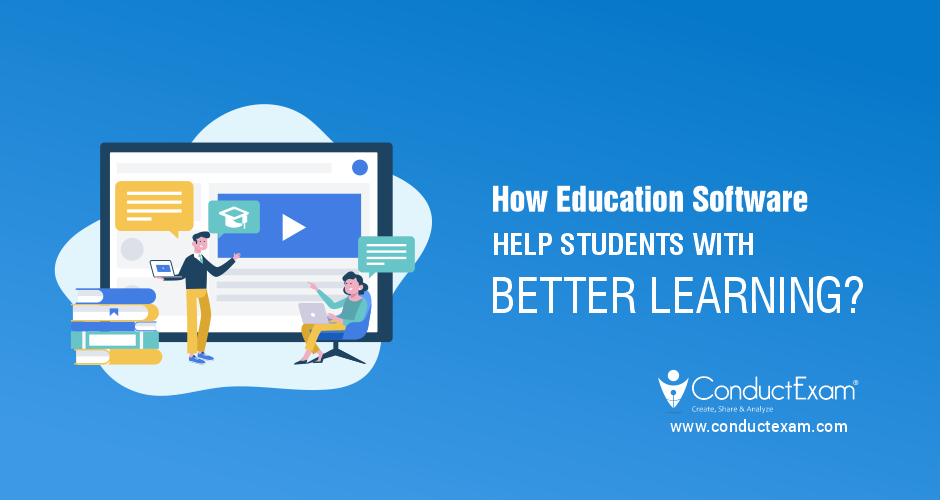There was a time when there were long queues in the libraries and book stores to find new informative stuff. Since the evolution of Internet and search engines, there has been a considerable reduction in these queues as the information is now available only a few clicks away, and not to miss out, in a fraction of second.
The increase in the usage of online resources has especially benefited the students and the younger generation, who are always ready to explore something new. As soon as they come across a new terminology, the first thing they would do is to find the meaning for the same and if they develop interest, they would simply start collecting all the relevant information for that terminology.
Also, in the current scenario, where online education has been used at the fastest pace, many companies have come up with an idea of educational applications.
These applications provide a platform for the students to learn new courses, be it open-source or payable courses. Based on the criteria decided, the students are provided with the completion certificate once they complete the course, by submitting all the assignments and qualifying the entire quiz if introduced. Hence, there is no need for larger and heavier books to be kept on your bookshelf, as there are a large number of courses available on these applications.
Not only for the purpose of teaching and learning, but education software can also manage the data of schools and other educational institutions. The main aim of this type of software is to ease the teaching-learning process even for the students who are willing to learn new concepts anywhere and anytime they want, without worrying about any boundaries or walls surrounding them. Also, it eases the processes for the management of the institution in terms of data storage and retrieval, analysis reports, results of the students, etc.
Also Read: How To Digitize The Learning System By Education Software
Educational Software Can Be Classified Into The Following Types
1.Courseware:
This is the combination of two terms, courses and software. As the name suggests, the software offers various paid as well as free courses for the students. Along with these, the software might also include various course materials in the form of presentations, PDFs, etc. Applications like Udemy, Coursera, Khan Academy, etc. can be classified as Courseware.
2. Classroom Aids:
These are the software that can be utilized in the classroom to teach students. We can give the example of a digital whiteboard facility offered by various applications like OpenBoard. Although, this software is comparatively less used as compared to Courseware.
3. Online Examination Software:
These can be used in assessing the students’ skills by taking examinations online. You can take all types of examinations, be it multiple choice questions, short questions, or brief questions.
Now let’s discuss how this software would help students in moving ahead with their education.
The use of graphics, images, animations, etc. multimedia content has made the learning process easier as compared to the conventional chalkboard method. Students are now able to grasp more content in a very short time.
Here Are Some Pros Of Using Educational Software For The Teaching And Learning Process.
Also read: How To Digitize The Learning System By Education Software
1. This software is much beneficial for students with physical disabilities, especially for those students who cannot commute to the school or those students who have hearing and visual disabilities. They can effectively learn new things through these applications and can take whatever amount of time they want and there won’t be any hustle to complete the courses as soon as possible.
2. No matter if we provide digital educational content or not, children nowadays are bound to sit in front of television sets and computer screens for hours. In this situation, introducing digital information in the form of videos, graphics, and animations can develop more interest amongst the students and can also increase the level of interest in that topic among the students.
3. The students can develop confidence in terms of self-study. There are some students who are totally dependent on their instructors and tutors to understand a particular topic as they don’t have enough courage to learn the topic on their own. Using the application, they can develop the confidence of learning the topics by themselves.
4. Students can get exposure to the latest trends and technologies once they start using these applications. For example, students who were accessing online drives to store data can get introduced to cloud-based storage as well. Thus, educational software enables the growth of a student’s knowledge according to emerging technologies.
5. The process of learning becomes goal-oriented. If a student is taking an online course for website development, he might have set the goal in his mind regarding a career in website development.
6. Physical efforts, resources of the institutions, time of teachers, students along with their parents are saved to a maximum extent. Also, students need not travel long distances to learn the curriculum.
7. You can easily test your skills by applying for various quizzes, assignments, and online examinations whenever you want.
8. The data of the students’ progress, assignments, enrollment details, etc. can be easily stored along with security enhancements.
9. You don’t have to pay high fees for taking a course. These applications provide cost-effective courses and so there is no issue for financially challenged students to appear for the course, which might not be possible in the physical model of education.
10. You can continue learning anywhere and anytime you want, for example at your home, terrace, the garden at the midnight, early morning, etc. There are no bounds with respect to time and place whilst using educational software. All you need is a book and a pen, in addition to your laptop, mobile, or tablet in which you are accessing the software.
11. You can have live discussions with fellow students who would be taking the same course and share your doubts, solve others’ doubts, post your views about that topic, like or dislike the content displayed, and even share it with your friends. These all features are just a few clicks away in case of using educational applications.
Conclusion
To summarize our discussion, there are a number of advantages, not limited to the above-mentioned ones, for utilizing the educational software for effective teaching-learning process. Hence, we can conclude the discussion here with a call to action for introducing and making the most use of educational software in the students’ curriculum.






Leave A Comment